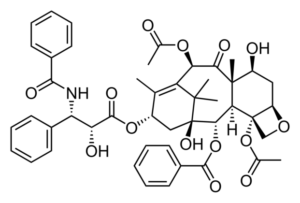
Representatives from the Food and Drug Administration (FDA) referenced “important and reassuring” results from the recent interim analysis of the SWEDEPAD clinical trial in which patients with peripheral arterial disease (PAD) received treatment with paclitaxel-coated or uncoated endovascular devices.
However, writing in a perspective published in the New England Journal of Medicine (NEJM), Andrew Farb, MD, Misti Malone, PhD, and William H. Maisel, MD, from the FDA’s Center for Devices and Radiological Health cautioned that along with recent analyses of additional data from nonrandomized studies that have not identified an increased mortality risk associated with paclitaxel-coated devices, these newer studies are “comforting” but “limited by the duration of follow-up.”
The SWEDEPAD interim analysis “did not show a difference between the [paclitaxel-coated and uncoated] groups in the incidence of death” during one to four years of follow-up, authors Mårten Falkenberg, MD, Joakim Nordanstig, MD, of Gothenburg University, Gothenburg, Sweden, and colleagues had reported in the NEJM last year.
In their perspective, entitled “Drug-coated devices for peripheral arterial disease,” Farb et al outline the benefits of devices coated with drugs like paclitaxel.
“Percutaneous revascularization procedures can improve claudication symptoms, and devices coated with antiproliferative drugs (drug-coated balloons and stents) reduce neointimal proliferation after revascularization procedures,” they write.
“Pivotal randomized, controlled trials (RCTs) of paclitaxel-coated devices in patients with femoropopliteal PAD reveal significantly reduced repeat-revascularization rates as compared with use of uncoated devices. Reasonable assurance of device safety and effectiveness at one year has led the FDA to approve six [paclitaxel-coated devices] to date, and their use has become common in symptomatic patients.”
In SWEDEPAD, fewer than 300 patients have been followed for four years, Farb et al note. “In contrast, 1,090 participants were available for analysis at five years in the FDA’s meta-analysis of the pivotal RCTs of the approved paclitaxel-coated devices. This gap underscores the importance of continued patient follow-up for ongoing randomized trials.”
They added: “Because of the demonstrated short-term benefits of the devices and the limitations of the available data, the FDA believes that clinical studies of these devices should continue and should collect long-term mortality data. Similarly, the FDA now routinely reviews longer-term data for [paclitaxel-coated devices] for which market authorization is being sought when they are intended to treat patients with PAD, and the agency requests that trials capture information on adjunctive antithrombotic therapy and medications indicated for patients with atherosclerosis.”
SOURCE: DOI:10.1056/NEJMp2031360











